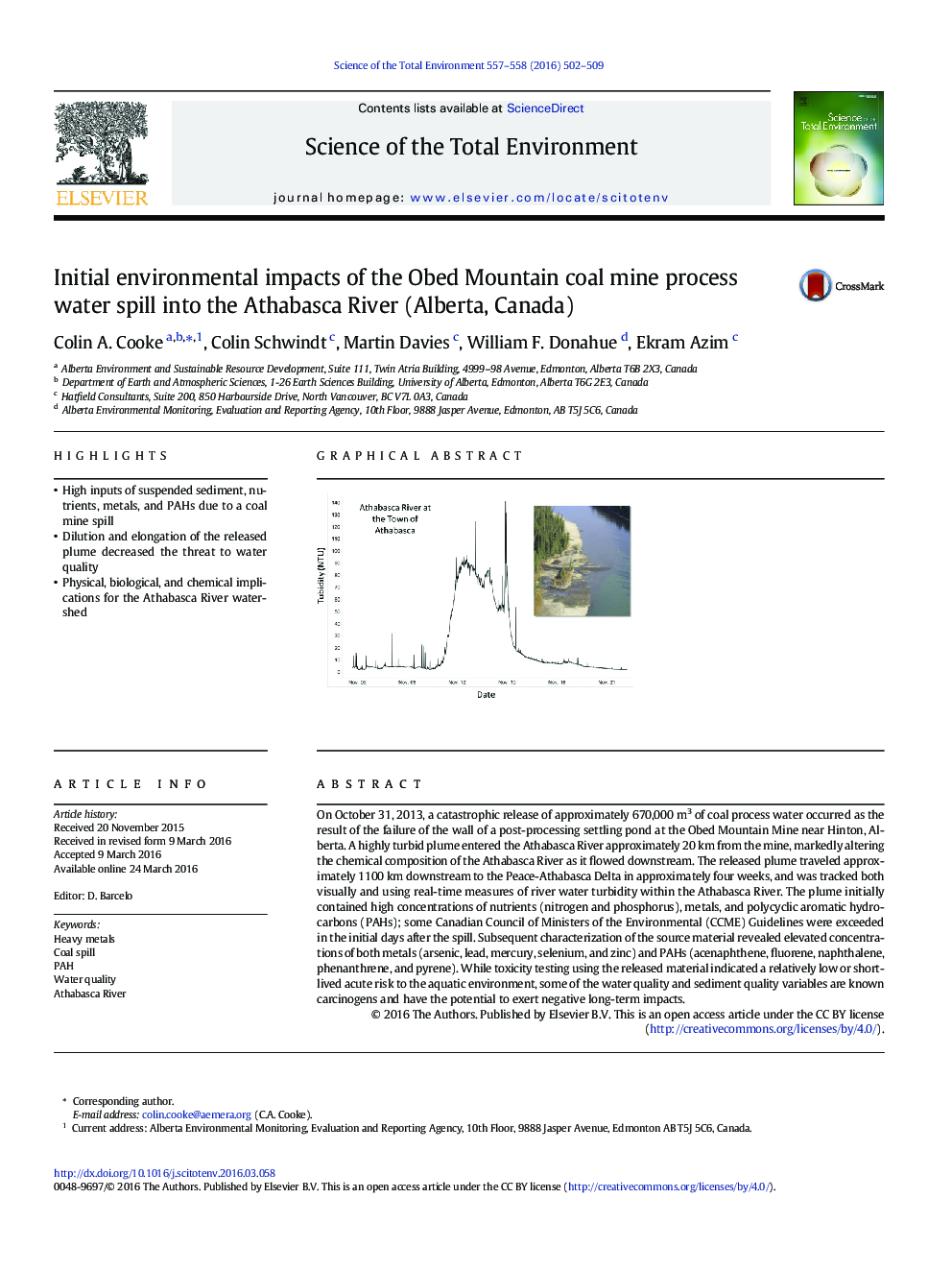| Article ID | Journal | Published Year | Pages | File Type |
|---|---|---|---|---|
| 6322555 | Science of The Total Environment | 2016 | 8 Pages |
â¢High inputs of suspended sediment, nutrients, metals, and PAHs due to a coal mine spillâ¢Dilution and elongation of the released plume decreased the threat to water qualityâ¢Physical, biological, and chemical implications for the Athabasca River watershed
On October 31, 2013, a catastrophic release of approximately 670,000Â m3 of coal process water occurred as the result of the failure of the wall of a post-processing settling pond at the Obed Mountain Mine near Hinton, Alberta. A highly turbid plume entered the Athabasca River approximately 20Â km from the mine, markedly altering the chemical composition of the Athabasca River as it flowed downstream. The released plume traveled approximately 1100Â km downstream to the Peace-Athabasca Delta in approximately four weeks, and was tracked both visually and using real-time measures of river water turbidity within the Athabasca River. The plume initially contained high concentrations of nutrients (nitrogen and phosphorus), metals, and polycyclic aromatic hydrocarbons (PAHs); some Canadian Council of Ministers of the Environmental (CCME) Guidelines were exceeded in the initial days after the spill. Subsequent characterization of the source material revealed elevated concentrations of both metals (arsenic, lead, mercury, selenium, and zinc) and PAHs (acenaphthene, fluorene, naphthalene, phenanthrene, and pyrene). While toxicity testing using the released material indicated a relatively low or short-lived acute risk to the aquatic environment, some of the water quality and sediment quality variables are known carcinogens and have the potential to exert negative long-term impacts.
Graphical abstractDownload high-res image (140KB)Download full-size image
